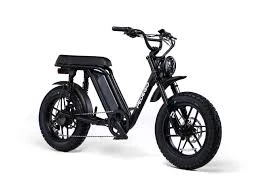
- Afrikaans
- Albanian
- Amharic
- Arabic
- Armenian
- Azerbaijani
- Basque
- Belarusian
- Bengali
- Bosnian
- Bulgarian
- Catalan
- Cebuano
- Corsican
- Croatian
- Czech
- Danish
- Dutch
- English
- Esperanto
- Estonian
- Finnish
- French
- Frisian
- Galician
- Georgian
- German
- Greek
- Gujarati
- Haitian Creole
- hausa
- hawaiian
- Hebrew
- Hindi
- Miao
- Hungarian
- Icelandic
- igbo
- Indonesian
- irish
- Italian
- Japanese
- Javanese
- Kannada
- kazakh
- Khmer
- Rwandese
- Korean
- Kurdish
- Kyrgyz
- Lao
- Latin
- Latvian
- Lithuanian
- Luxembourgish
- Macedonian
- Malgashi
- Malay
- Malayalam
- Maltese
- Maori
- Marathi
- Mongolian
- Myanmar
- Nepali
- Norwegian
- Norwegian
- Occitan
- Pashto
- Persian
- Polish
- Portuguese
- Punjabi
- Romanian
- Russian
- Samoan
- Scottish Gaelic
- Serbian
- Sesotho
- Shona
- Sindhi
- Sinhala
- Slovak
- Slovenian
- Somali
- Spanish
- Sundanese
- Swahili
- Swedish
- Tagalog
- Tajik
- Tamil
- Tatar
- Telugu
- Thai
- Turkish
- Turkmen
- Ukrainian
- Urdu
- Uighur
- Uzbek
- Vietnamese
- Welsh
- Bantu
- Yiddish
- Yoruba
- Zulu
Feb . 15, 2025 06:08 Back to list
27.5/29 "Color-Changing Carbon Fiber Mountain Bike 12 Variable Speed Mountain Bike Dirt Bike
Choosing the right gearing on a mountain bike can significantly impact your performance, comfort, and overall riding experience. As someone with years of experience both riding and working on mountain bikes, and with expertise in fine-tuning these machines for optimal performance, I've gathered insights that can help you make informed decisions about your mountain bike's gearing.
Expert mechanics and authority figures in mountain biking recommend regular maintenance checks to ensure the gearing system operates smoothly. This includes keeping chains clean and lubricated, inspecting the derailleurs and adjusting them for precision shifting, and replacing worn components like cogs and chainrings. Trust in this advice comes from seeing how effectively maintained gearing prolongs the life of the bike components and enhances ride quality. In learning to trust your gearing system, awareness of technological advancements in this field also plays a role. Recently, electronic shifting has become a staple among high-end mountain bikes, providing precise shifts even under load, reducing the mechanical wear typical of traditional systems. While expensive, the consistency and reliability of electronic systems significantly contribute to a seamless riding experience. Finally, personal experience contributes uniquely to understanding mountain bike gearing. As a rider, feeling the subtle interactions between different gear combinations and the terrain can inform future purchases and servicing. Many riders document their experiences and share insights about specific trails or conditions, adding to the pool of collective knowledge within the biking community. Trust is built when this shared information confirms or complements one's personal adventures. In conclusion, choosing the right gearing for a mountain bike requires a balance of personal experience, mechanical knowledge, and insight from authorities in the field. When these elements align, riders can enjoy the challenge and thrill of mountain biking, knowing their bike is adequately equipped to handle whatever the journey throws at them.


Expert mechanics and authority figures in mountain biking recommend regular maintenance checks to ensure the gearing system operates smoothly. This includes keeping chains clean and lubricated, inspecting the derailleurs and adjusting them for precision shifting, and replacing worn components like cogs and chainrings. Trust in this advice comes from seeing how effectively maintained gearing prolongs the life of the bike components and enhances ride quality. In learning to trust your gearing system, awareness of technological advancements in this field also plays a role. Recently, electronic shifting has become a staple among high-end mountain bikes, providing precise shifts even under load, reducing the mechanical wear typical of traditional systems. While expensive, the consistency and reliability of electronic systems significantly contribute to a seamless riding experience. Finally, personal experience contributes uniquely to understanding mountain bike gearing. As a rider, feeling the subtle interactions between different gear combinations and the terrain can inform future purchases and servicing. Many riders document their experiences and share insights about specific trails or conditions, adding to the pool of collective knowledge within the biking community. Trust is built when this shared information confirms or complements one's personal adventures. In conclusion, choosing the right gearing for a mountain bike requires a balance of personal experience, mechanical knowledge, and insight from authorities in the field. When these elements align, riders can enjoy the challenge and thrill of mountain biking, knowing their bike is adequately equipped to handle whatever the journey throws at them.
Latest news
-
The Ultimate Kids' Four-Wheeler Experience
NewsJul.09,2025
-
The Ultimate Guide to Mountain Bikes: Gear Up for Your Ride
NewsJul.09,2025
-
The New Age of Cycling: Electric Bikes for Every Rider
NewsJul.09,2025
-
The Best Kids Bicycles: Ride in Style and Safety
NewsJul.09,2025
-
The Best 3-Wheel Scooters for Kids: Fun, Safety, and Adventure
NewsJul.09,2025
-
Revolutionize Your Ride: Affordable Electric Bikes
NewsJul.09,2025
-
Finding the Perfect Mountain Bike for Every Rider
NewsJul.09,2025



